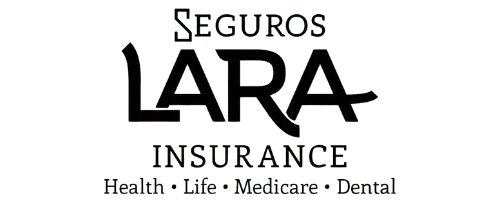- 864-354-6670
- [email protected]
- Mon - Fri: 10:00 a.m. - 4:00 p.m.
Frequently Asked Questions About Insurance
We have answers!
Frequently asked Questions
Marketplace representatives are limited in what they can tell you about insurance plans
Representatives at the Marketplace do not discuss the plan details that will help you find the plan that meets your specific needs. In all of the confusion of Obamacare agents are the only people who can legally talk to you about all your medical insurance options. We can explain the positive and negative aspects of all the plans, explore the different components of plans (co-insurance, deductible, co-pays), discuss the availability of doctors within your network and educate you on the best way to use the plan benefits.
Enrolling through the Marketplace is complicated
Creating an account on healthcare.gov and going through the process of validating identity, reporting personal information, acquiring subsidy and enrolling in a plan is very confusing and it’s easy to make a mistake. Also you will not receive the necessary information you need to help you decide on the best plans and coverage.
We are a full service agency – no matter what you need we will make sure that it gets done right
Once you have enrolled you now have the new job of making sure you stay enrolled. When you use Lara Insurance you have the experience and knowledge of our agency to help you select the best plan to get enrolled and stay enrolled. According to a RAND corporation study, 5.9 million people who were enrolled lost their subsidies and their coverage because they did not understand the process of maintaining their insurance. It is our job to make sure that does not happen to you. Also if you need to use your insurance but your claim does not get processed correctly or your provider makes a mistake we will assist you in getting your issue resolved. Whatever your insurance needs are, we are here to help.
We are your advocate with the Marketplace – we simplify the process of acquiring health insurance
Why go directly to the Marketplace when you can use an agent? Although the Marketplace can help you qualify for a subsidy they cannot discuss the plan details that will help you find the plan that works best for you.
We are providing all our services completely free to you – there is no additional cost
Since we are paid directly by the carriers we do not charge you anything for our services. We are happy to answer all your questions, educate you on the best plans in your network and be a resource for any future issues you may experience, at no cost to you. The only payment you will make is your monthly premium payment to the carrier.
The Exposure
According to the Kaiser Family Foundation about a quarter of U.S. adults age 18-64 say they or someone in their household had problems paying or an inability to pay medical bills in the past 12 months. In the event of a car accident or a negative diagnosis if you are uninsured you will have to pay the total hospital bill and you will also have to pay completely out of pocket for prescription drugs.
The Premium – the cost to have the insurance
- The premium for an individual could start as low as $0 a month, depending on age and yearly income, and be as much as the base cost for the plan.
- The premium for a family could start as low as $40 a month, depending on age, household size and yearly income and also be as much as the base cost for the plan.
The Plan – the cost to use the insurance
The structure of the plan (deductible, co-pays, co-insurance) varies with the details of the plan. All insurance plans under ObamaCare have an annual cap that limits the total exposure for the year and all plans also cover prescription drugs and preventive services.
The Marketplace may request documents to verify your information if there is a data mismatch with the original information you provide. The following is a list of acceptable documents you can provide to us that we will submit to the Marketplace.
Documents to verify U.S. citizenship
- U.S. passport
- Certificate of Naturalization (N-550/N-570)
- Certificate of Citizenship (N-560/N-561)
Documents to verify immigration status
- Reentry Permit (I-327)
- Permanent Resident Card, “Green Card” (I-551)
- Refugee Travel Document (I-571)
- Machine Readable Immigrant Visa (with temporary I-551 language)
- Temporary I-551 Stamp (on Passport or I-94/I-94A)
- Foreign passport
- Arrival/Departure Record (I-94/I-94A)
- Arrival/Departure Record in foreign passport (I-94)
- Certificate of Eligibility for Nonimmigrant Student Status (I-20)
- Certificate of Eligibility for Exchange Visitor Status (DS-2019)
- Employment Authorization Card (I-766)
- Notice of Action (I-797)
- Certification from U.S. Department of Health and Human Services (HHS) Office of Refugee Resettlement (ORR)
- Document indicating withholding of removal (or withholding of deportation)
- Administrative order staying removal issued by the Department of Homeland Security
- Document indicating a member of a federally-recognized Indian tribe or American Indian born in Canada
- Office of Refugee Resettlement (ORR) eligibility letter (if under 18)
- Resident of American Samoa Card
Documents to verify income
- S. Individual Income Tax Return (Form 1040)
- Wages and tax statement (W-2)
- Pay stub
- Letter from employer
- Cost of living adjustment letter and other benefit verification notices
- Lease agreement
- Copy of a check paid to the household member
- Bank or investment fund statement
- Document or letter from Social Security Administration (SSA)
- Form SSA 1099 Social Security benefits statement
- Self-employment ledger
- Letter from government agency for unemployment benefits.
Let’s explore the costs for your health insurance and how you would calculate them.
Premium: This is the amount that you pay for coverage.
Deductible: The initial amount that you pay out of pocket. Like any other type of insurance, the deductible can range in amount depending on how your plan is structured. Generally, the higher the deductible the lower the premiums.
Co-insurance: The percentage of covered expenses paid by the medical plan. The co-insurance amount is per family per calendar year. For example, in a co-insurance arrangement, there can be an 80/20 split between the insured and the insurance carrier in which the insured pays 20% of the cost of care up to the deductible, but below the out-of-pocket limit set forth by the policy. This is typically associated with coverage provided by a Preferred Provider Organization.
Co-payment: Sometimes referred to as a “co-pay”, this is a set cap amount that you will pay each time you receive medical services. This is typically associated with coverage through a Health Maintenance Organization. For example, every time you visit your doctor you may have to pay $20 as a co-payment. Under ObamaCare these payments now contribute toward out-of-pocket policy maximums. The co-payment and the coinsurance are not the same thing.
Max Out-of-Pocket: The cumulative dollar amount of covered expenses in excess of the deductible after which the coinsurance payment stops and the insurance carrier pays 100% of covered expenses. The purpose of the stop-loss limit is to limit the out-of-pocket costs for the insured individual. At this point, all you will have to pay is your premiums.
What’s important to remember for out-of-pocket expenses is that not all expenses go toward meeting the out-of-pocket max. Premiums do not apply to the out-of-pocket expense maximum but your deductible, co-pays and coinsurance do apply toward this amount.
Get A Quote
Available from 10am – 4pm, Monday – Friday
Address: 62 St. Mark Road, Taylors, SC 29687
Email: [email protected]
ARE YOU FRUSTRATED WITH YOUR HEALTH INSURANCE? LET US HELP YOU. WE’LL DO IT FOR FREE.
Menu - English
Menu - Espanol
Latest News
Protect Your Family’s Health with Quality Health Insurance Coverage
As a parent, your top priority is the well-being of your family. You work hard to provide them with food, shelter, and all of the
Get Personalized Health Insurance Help with Seguros Lara Insurance
At Seguros Lara Insurance, we believe that choosing the right health insurance coverage should be easy and stress-free. That’s why we offer one-on-one health insurance

